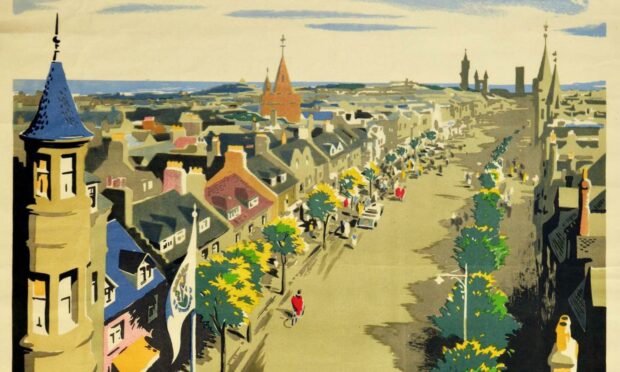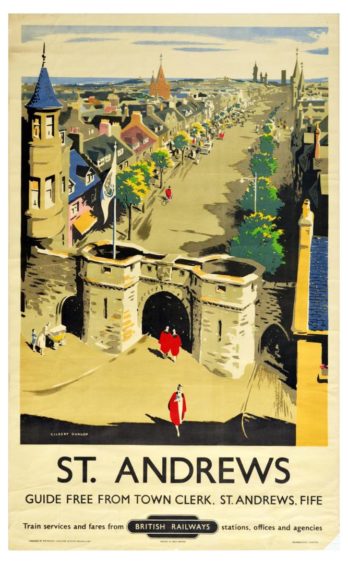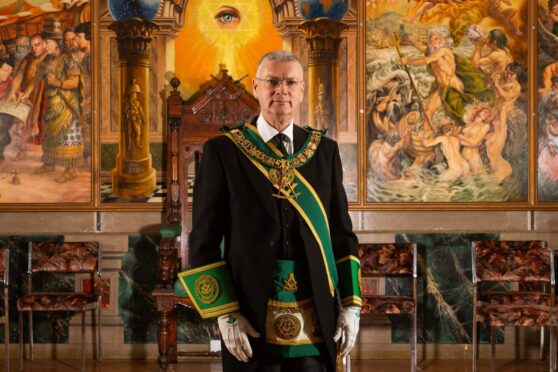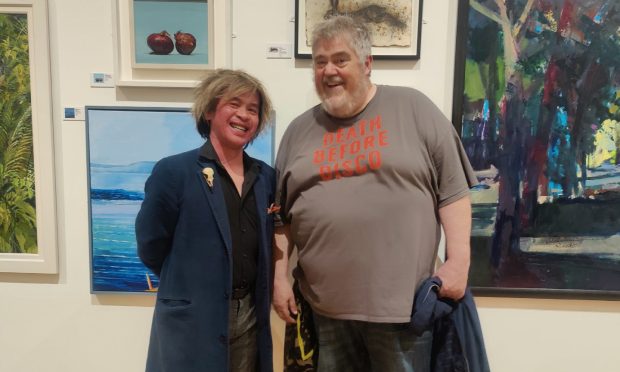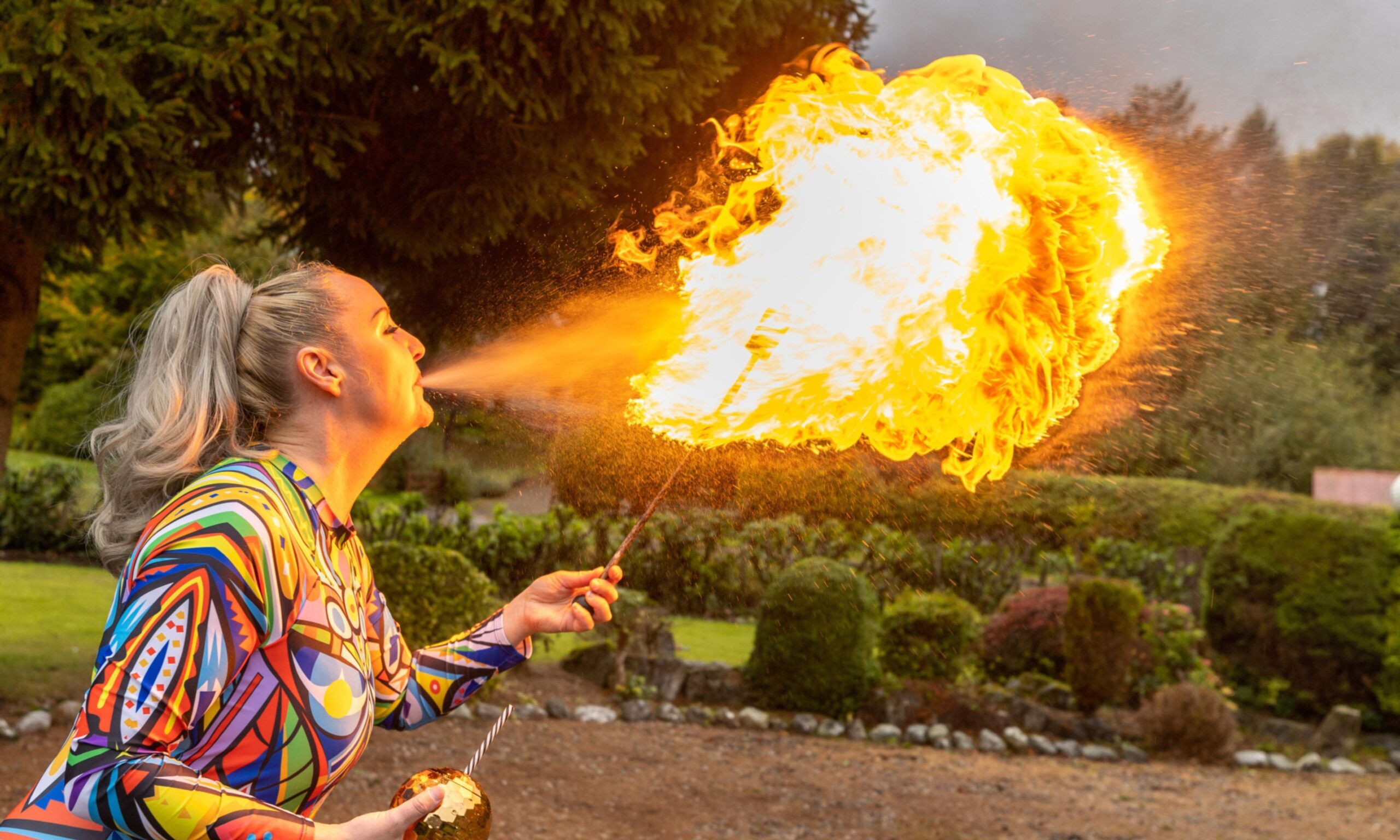It is not hard to be drawn to vintage posters of St Andrews, especially the stunner painted by Gilbert Dunlop for British Rail in the 1950s.
A good example appeared at a recent online sale organised by Antikbar Original Vintage Posters of London.
An original travel advertisement for British Railways, it was created to promote the East Neuk town as a mainline destination, its text reading: St Andrews – Guide free from Town Clerk, St Andrews, Fife. Train services and fares from British Railways stations, offices and agencies.
The original painting by Dunlop shows St Andrews University students in traditional red gowns walking through West Port gate, with South Street lined with trees and colourful houses and the shapes of St Andrews Cathedral and Tower in the background.
Children’s illustrator
During the 1950s Gilbert Dunlop was a prolific illustrator of children’s books, most notably including the works of Enid Blyton.
Published by the Railway Executive Scottish Region and printed by McCorquodale of Glasgow, the poster was in good condition, with some creasing, small tears, paper loss and pinholes. It measured 40 x 24 inches.
Posters have featured in this column several times over the years. The first in 1998 described a travel poster of Dunnotar Castle painted in 1939 by James McIntosh Patrick. It sold for £1000. The same year Dr Patrick’s original watercolour of the same scene sold for only £100 more!
So posters have never lost their appeal, or suffered the cyclical downturn experienced by auction staples such as furniture, silver, ceramics and niche collectables.
Estimated at £375-£750, the St Andrews poster sold for £800.
